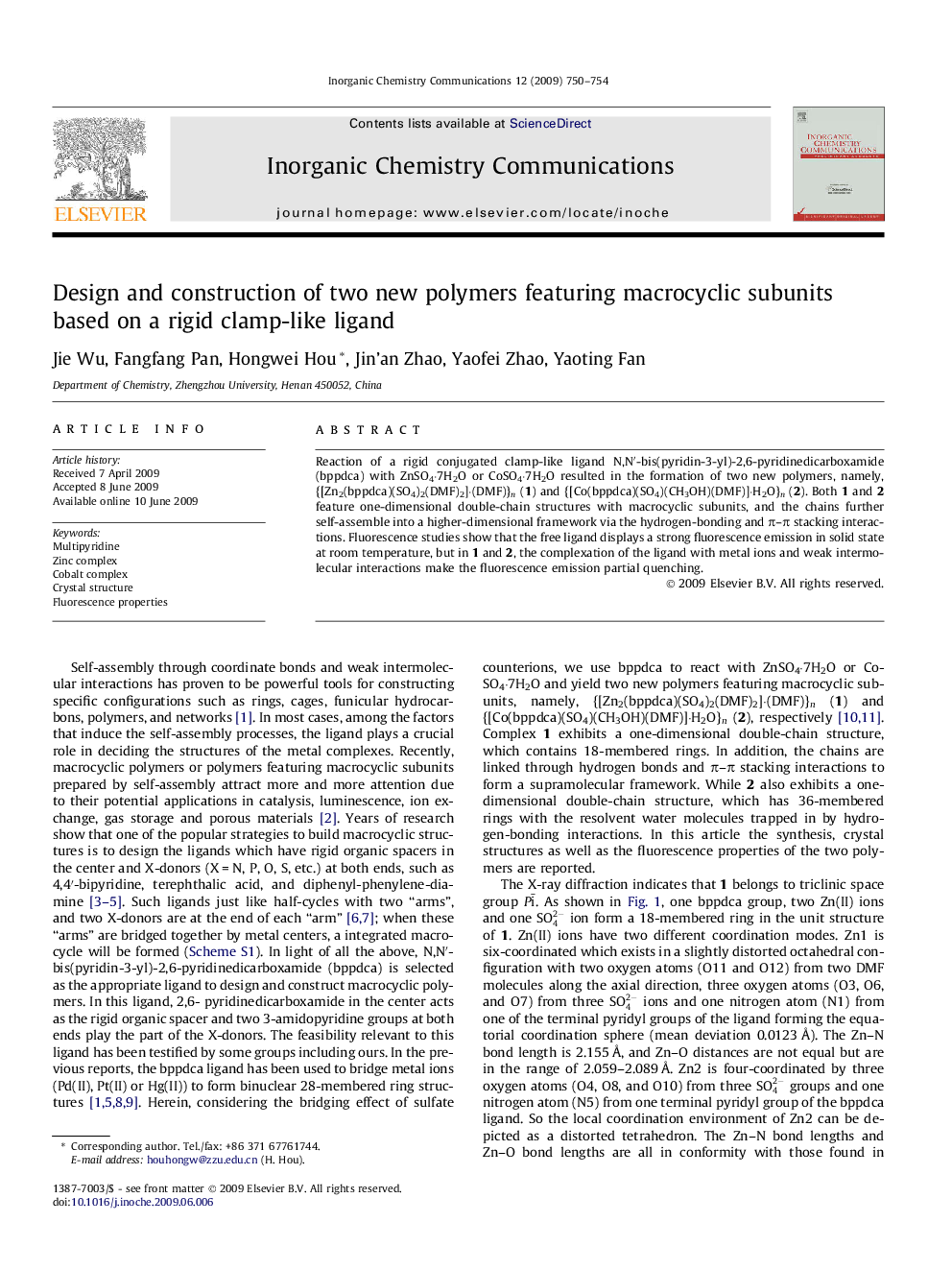| Article ID | Journal | Published Year | Pages | File Type |
|---|---|---|---|---|
| 1306229 | Inorganic Chemistry Communications | 2009 | 5 Pages |
Reaction of a rigid conjugated clamp-like ligand N,N′-bis(pyridin-3-yl)-2,6-pyridinedicarboxamide (bppdca) with ZnSO4·7H2O or CoSO4·7H2O resulted in the formation of two new polymers, namely, {[Zn2(bppdca)(SO4)2(DMF)2]·(DMF)}n (1) and {[Co(bppdca)(SO4)(CH3OH)(DMF)]·H2O}n (2). Both 1 and 2 feature one-dimensional double-chain structures with macrocyclic subunits, and the chains further self-assemble into a higher-dimensional framework via the hydrogen-bonding and π–π stacking interactions. Fluorescence studies show that the free ligand displays a strong fluorescence emission in solid state at room temperature, but in 1 and 2, the complexation of the ligand with metal ions and weak intermolecular interactions make the fluorescence emission partial quenching.
Graphical abstractReaction of a rigid clamp-like ligand N,N′-bis(pyridin-3-yl)-2,6-pyridinedicarboxamide (bppdca) with ZnSO4·7H2O or CoSO4·7H2O resulted in two new polymers, namely, {[Zn2(bppdca)(SO4)2(DMF)2]·DMF}n (1) and {[Co(bppdca)(SO4)(CH3OH)(DMF)]·H2O}n (2). Single-crystal X-ray diffraction reveals that both structures were one-dimensional double chain connected by weak interactions generating higher dimension with macrocycles. Their fluorescence properties were reported in this article.Figure optionsDownload full-size imageDownload as PowerPoint slide
